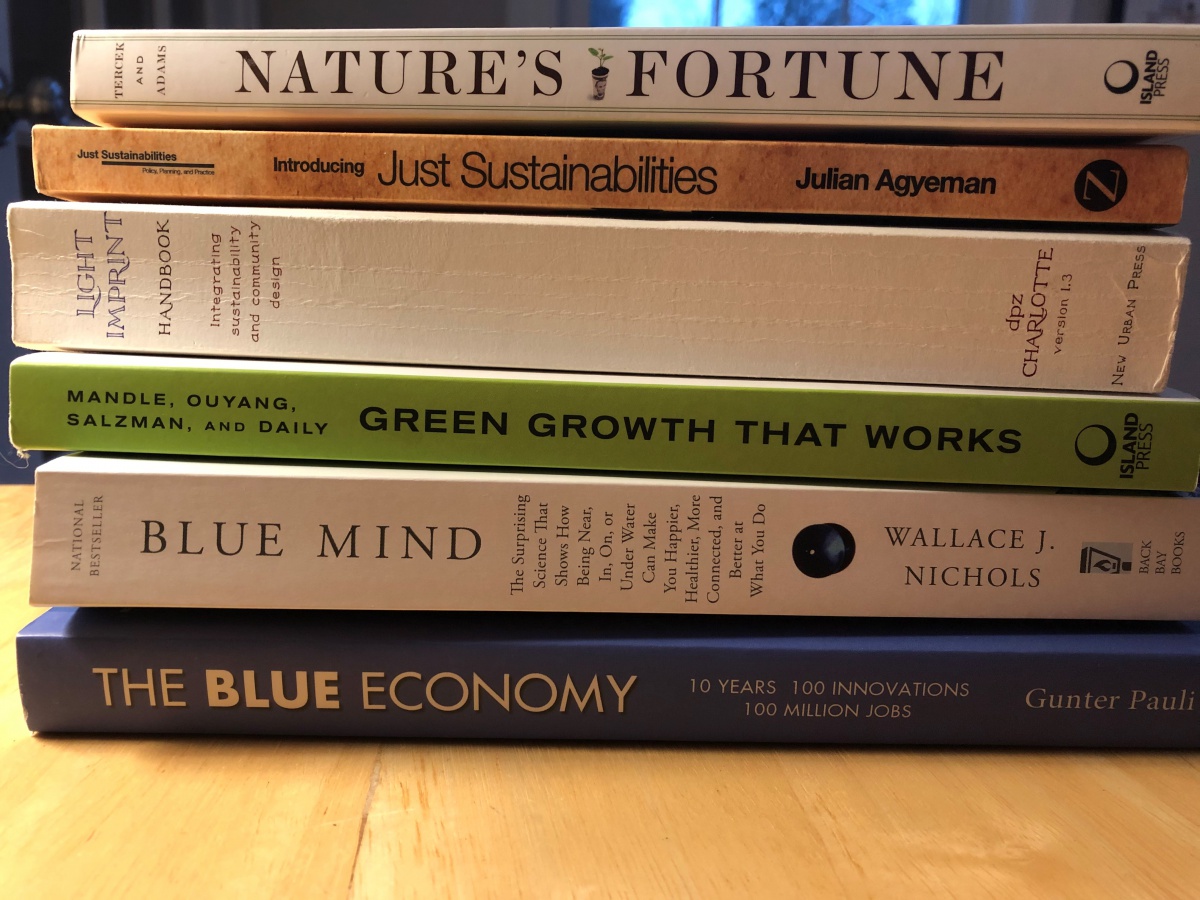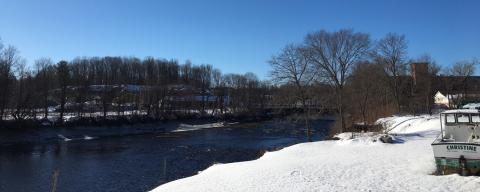More Nature Economy Reads for the New Year
SHARE
Last week I shared a few of my favorite nature economy reads. Because there are so many good books out there on the benefits we all receive from nature, I wanted to write a second post highlighting several more books I recommend. Two of the books evoke water—Blue Economy and Blue Mind. Water connects us all and is essential to life. A good deal of our Nature Economy applied research and programming looks at how people use and value water in their communities. Many of New Hampshire’s towns have a river running through them with strong historical connections between the economic development of the town and its natural assets and exciting potential for future economic vibrancy (Read our recent research brief for more details on rivers and economic vibrancy!)
The other book, The Light Imprint Handbook, discusses how nature can provide many benefits when integrated into design and planning in our communities. This is something we discuss in our programming across the State.
Read on for a quick summary of these books and lets keep the conversation going. Let me know what nature economy books inspire you.

The Blue Economy -10 years, 100 Innovations, 100 Million Jobs by Gunter Pauli
Inspired by a recent Think Tank on the Blue Economy hosted by the Essex County Community Foundation, I picked up this book. Pauli challenges us to think about a different business model where production is focused on what is locally available and instead of waste, multiple benefits are created from processes and services. It highlights 100 nature inspired technologies that can also positively impact local economies.
Blue Mind by Wallace J. Nichols
This book is a fascinating dive into the science of why we are drawn to water and thus often build our economies and communities near water. The subtitle of the book describes it well “The Surprising Science That Shows How Being Near, In, On, or Under Water Can Make You Happier, Healthier, More Connected, and Better at What You Do.”
The Light Imprint Handbook by Thomas Low
In a beautiful book with many colorful designs and photographs, Low describes how intentionally incorporating nature into the design of our communities can help reduce community costs, improve aesthetics and provide recreational and health benefits that increase quality of life. We know that quality of life is essential for a thriving economy and this book includes many actual examples for application across the country.

